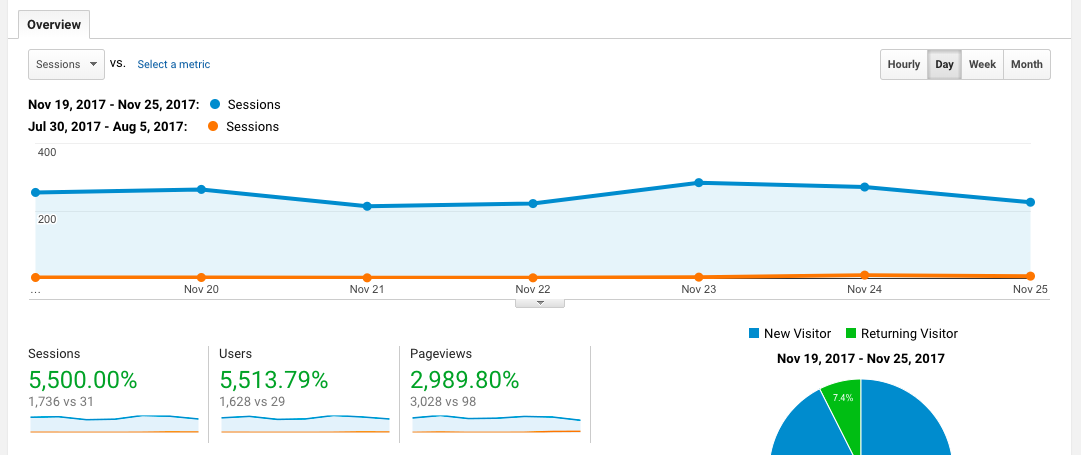Learning how AdWords works can be a stressful endeavor. Any guide or blog on it is filled with jargon describing dozens of tools, rules, and ways to measure performance. But at its simplest level, AdWords is a means of sending people who search for something relevant to your organization to your website from Google’s search engine.
Let’s take a look at my client, Wallow Foundation, to see how that works. Wallow Foundation is a very new nonprofit, founded only a couple years ago. Their mission is to support art programs in Central Oregon. They have a gallery with paintings for sale and use the space for wedding receptions, team-building events, private parties, and art classes. They also have online sales of prints from the work of the late award-winning artist, Lynn Powers. In addition to their owned assets, they also have access to many local wineries and a helicopter.
Despite all of these wonderful things that they offered. They were only getting roughly 30 hits a week, and mostly from those who already knew of their organization. The problem is that people searching things related to the Wallow won’t find it because of its low ranking on Google search. This is common amongst small and new organizations because Google’s search algorithm heavily weighs links to your website, and new, small organizations simply have fewer links that go from other websites to theirs.
But behold the great equalizer, Google Grants! The features of your website matter less (but still some) when using AdWords because you can put money toward boosting a page above all the other web pages that show up on the search engine. You can leapfrog from 100th place to 1st place. If you’re wondering what kind of impact has on visits to your website, in the case of wallow foundation that is an increase of 5,500%.

With the amount paid for each advertisement clicked being limited to $2, the amount of clicks that can be purchased in a week with all of the allotment being used is roughly 1700. And being given this money for free by Google, you are getting $2,303 worth of traffic for free that a for-profit company would otherwise have paid for if you hadn’t snatched it up with your ads.
Not only is this a huge amount of traffic that has a very high market-value (the price for a click is free-market based because it is bought in an auction format), but it is the same regardless of the size of your nonprofit. A nonprofit with gross receipts of $50 million and a nonprofit with gross receipts of $50 thousand both get $120,000 a year to spend on AdWords. This means that the percent increases in performance for small nonprofits can be monumental.
These stats from the Wallow were prior to the 2018 Rules Update. The scope of this case study doesn’t allow us to provide a full explanation of the impact of this update, but we would be remiss not to at least mention the new opportunity of maximize conversions bidding. Without diving too deep into the jargon, maximize conversions bidding allows you to trade in your quantity for quality. You’ll be able to purchase fewer clicks because you will often have to pay more for a click than the old $2 limit, which will eat up your daily allotment. But those clicks are often justifiably expensive because they’re better. You might have fewer people visiting your wedding packages web page, but those people visiting are searching things that would imply they are more likely to purchase a wedding package.
Michael Rasko is a nonprofit marketing consultant who specializes in Google Grants. If you work with or for a nonprofit who is interested in starting or improving a Google Grants account, contact him to learn more about a one-month, no-commitment free trial. Included in the free trial is application assistance for new accounts and re-activation assistance for accounts that have been suspended for policy violations.
You can contact him for this reason or any other reason by filling out the contact form below or calling (503) 558-6500. If you do call and get voicemail, remember to leave a detailed message to differentiate yourself from the many robocalls that publicly listed phone numbers receive.